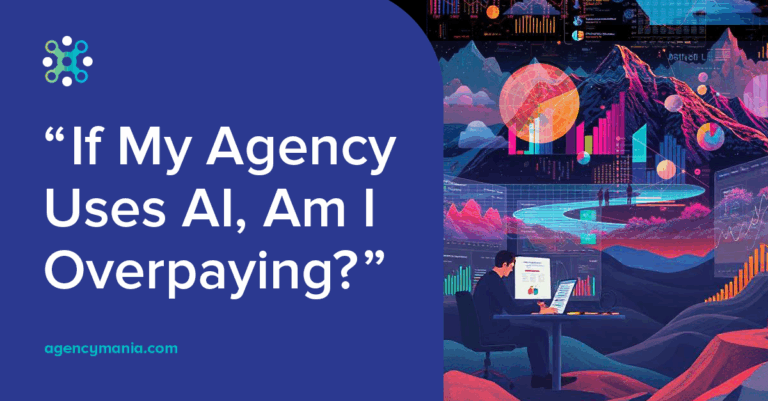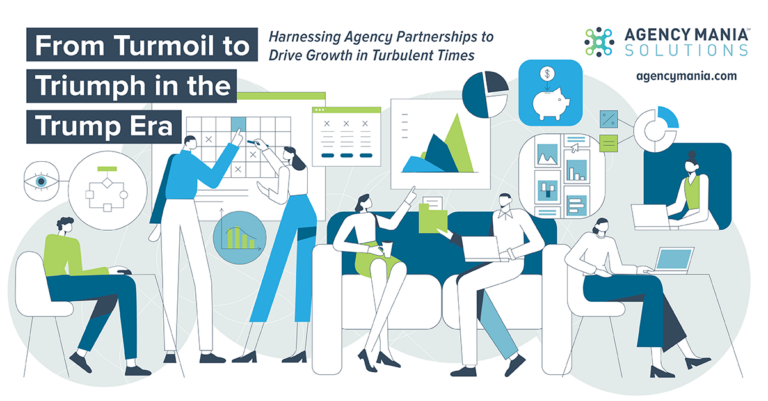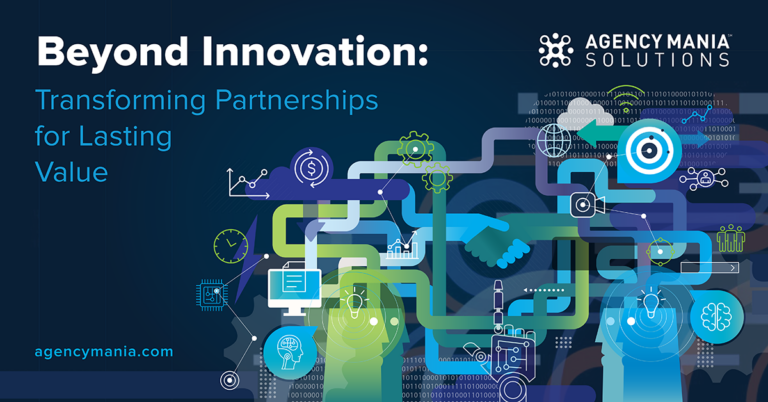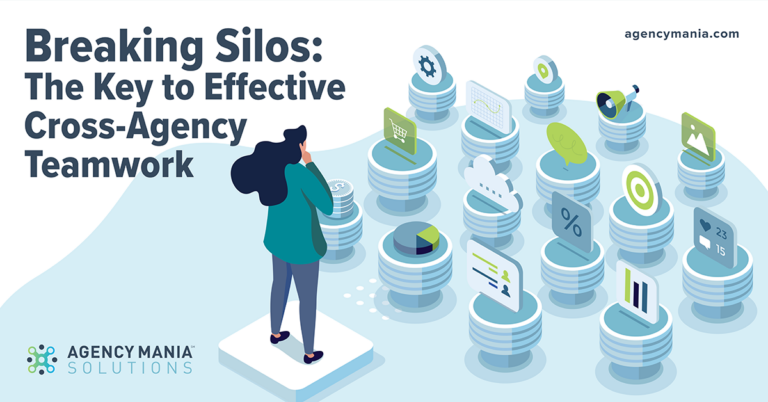Blind Men and the Elephant:
Download a print-friendly version here
“It was six men of Indostan
To learning much inclined,
Who went to see the Elephant
(Though all of them were blind),
That each by observation
Might satisfy his mind.”
In his infamous poem “The Blind Men and the Elephant,”
19th century American poet John Godfrey Saxe warns about
common misperceptions when looking at the component
parts, and not the whole. In the story, six blind men
approached an elephant from different angles. One of the
blind men believed that he touched a wall (the elephant’s
side), another a spear (the tusk), a tree (the knee), a snake
(the trunk), a fan (the ear) and finally, the last blind man
believed that he touched a rope (the tail). Were they all right?
Yes. Were they all wrong? Yes.
Now transport yourself to today’s marketing world and you will
realize most advertisers are blinded: they are unable to see the
full picture of what their roster of agencies can do for them as
a whole. They can only see or experience the component parts
and fail to leverage and unify their vast ecosystem of agency
partners in support of the company’s marketing strategy.
Why should advertisers align behind a clear agency model?
No matter how good each individual instrument is in any given
orchestra, if those instruments are not working together in a
harmonious way, you inevitably end up with cacophony and
noise. This might be a tired analogy to some, but it’s hard to
ignore such a powerful and simple concept when it applies to
agency management. All companies understand the strategic
importance of aligning and organizing talent in a synergic way.
What applies internally also applies to external resources
like agencies, and yet too few apply the rigor and discipline
required. Here are four effective ways brand advertisers can
build a robust agency model:
#1: Prioritize your organizational needs
Even the best agencies are unlikely to deliver amazing work
unless a client has set a framework that stipulates their
individual role or how they come together as a unified team to
execute. Often referred as “agency models,” these governing
principles drive what type of agency capabilities are needed to
best support the marketing organization, their individual role
and responsibilities, where they start and end in the marketing
funnel, how they are compensated, what success metrics they
are based on, who leads and who supports, and how they are
expected to interface and collaborate with each other.
Over the years, a few agency models have emerged to answer
the most common requirements of advertisers who naturally
have varying degrees of complexity, scope and organizational
needs. There are a number of important drivers marketers
must consider and prioritize in order to determine which
model is best suited to satisfy their company needs:
#2: Evaluate pros and cons of various models
No single agency model can satisfy all these requirements.
Brands must consider the pros and cons of each scenario
before deciding on the most effective model for their business.
The most common agency models can be evaluated based on
two primary dimensions: 1) whether agency coordination
and work integration is primarily client or agency led and
2) the scalability (depth and breadth) of the agency offering.
There are essentially six primary agency models in practice,
which map to today’s agency marketplace: holding company,
agency network, full service, open source, in-house and hybrid.
Essentially, the holding company, agency network and full-service
models rely heavily on the agency (vs. the client) to
coordinate across the agency roster and integrate the work
on the client’s behalf, with varying degrees of scale and
commitment to a particular agency offering. These types of
agency models favor retained staff agreements. This is what
recently led advertisers like Emirates Airline to select a team
of WPP agencies (called Team Air) to handle its global
branding and creative account.
On the opposite end of the spectrum, the so-called “open
source” model allows marketers to cherry-pick agencies
from an approved list, but the client is on point to ensure
the integration and coordination of these services, as well
as the collaboration, often between competing agencies.
This a-la-carte approach offers maximum flexibility to the
client and favors project based engagements, where
advertisers like Kimberly-Clark are no longer guaranteeing
business for their agencies.
In-house agencies are also on the rise. Most advertisers have
now in-sourced some or a small aspect of their marketing
activities like social, production, content, etc., work that was
previously handled by specialized agencies. This is the case for
Taco Bell, which recently created a dedicated in-house team of
millennials who craft content specifically to talk to Taco Bell’s
millennial fans in their own language.
#3: Consider hybrid models
While these model scenarios are helpful to understand the
nuances of different approaches, the reality is often more
complex as multi-brand, global companies must often satisfy
a wide range of organizational needs. It means that they
might need to contemplate more than one agency model,
an approach particularly appealing to the multi-brand global
companies unwilling or simply unable to default to the
convenience of an all-encompassing holding company model.
These companies might choose to combine multiple agency
models to get to their desired results across all of their
brands and geographies, hence the growing popularity of
this particular model. An advertiser might want to rely on
a full service agency model for one of its brands, leverage
the flexibility of an open source model for specialized digital
services and realize some efficiencies by building an in-house
agency to handle its print creative. Consider a hybrid model
if you want to minimize trade-offs and unlock the benefits of
complementary agency models strategically applied to diverse
needs in your organization.
#4: Assess and evolve your model
Agency models are dynamic in nature. Your company’s agency
model will inevitably change over ti me to stay aligned to your
evolving priorities and organizational needs. What worked a
year or two ago might no longer be the answer. Is your model
now obsolete? Have you carefully considered all scenarios and
picked the right strategy? Hiring a top notch agency won’t fi ll
that gap either. Having the best agency resources in the world
might be simply a waste of talent if you cannot get those to
work together synergistically. There is always an elephant in
the room. Hopefully you can now see it.
“And so these men of Indostan
Disputed loud and long,
Each in his own opinion
Exceeding stiff and strong,
Though each was partly in the right,
And all were in the wrong!”









